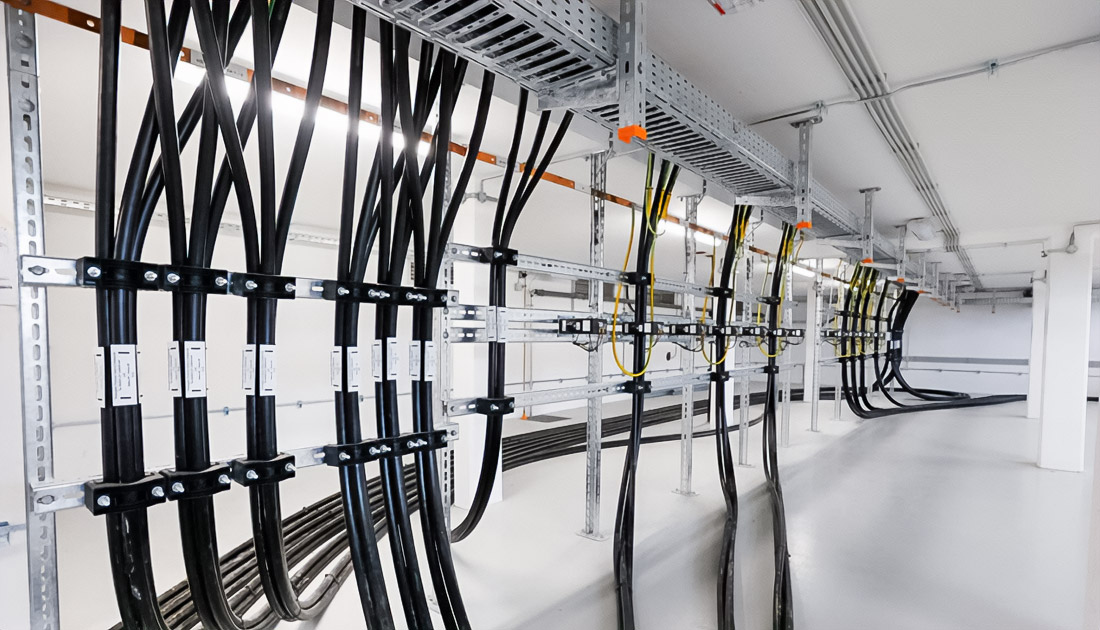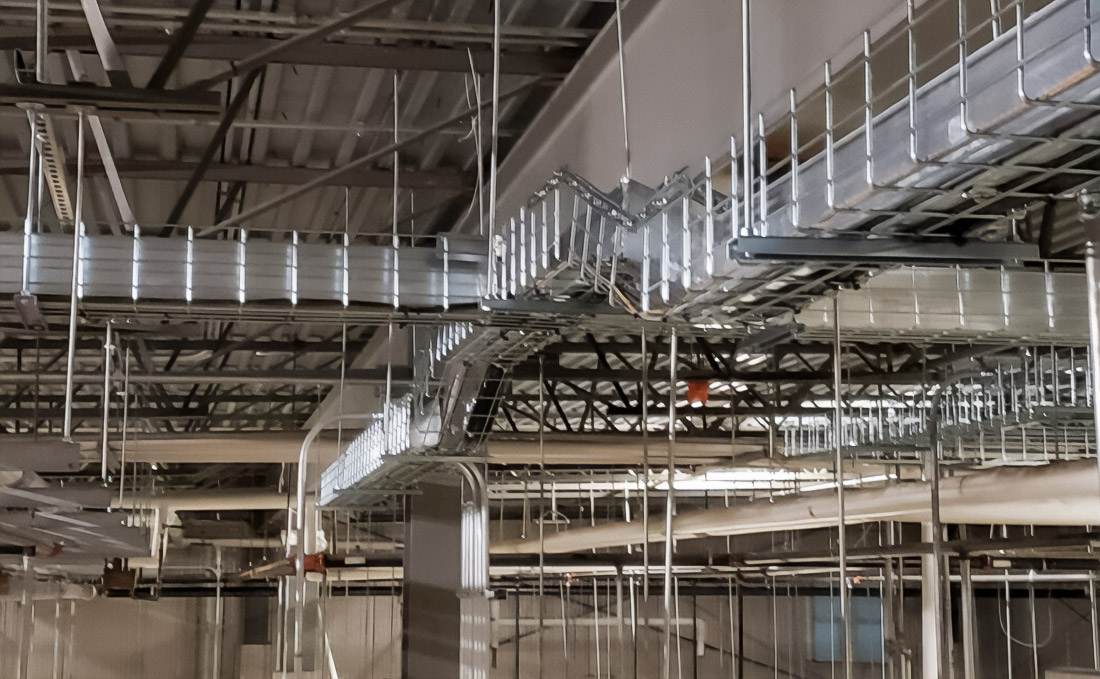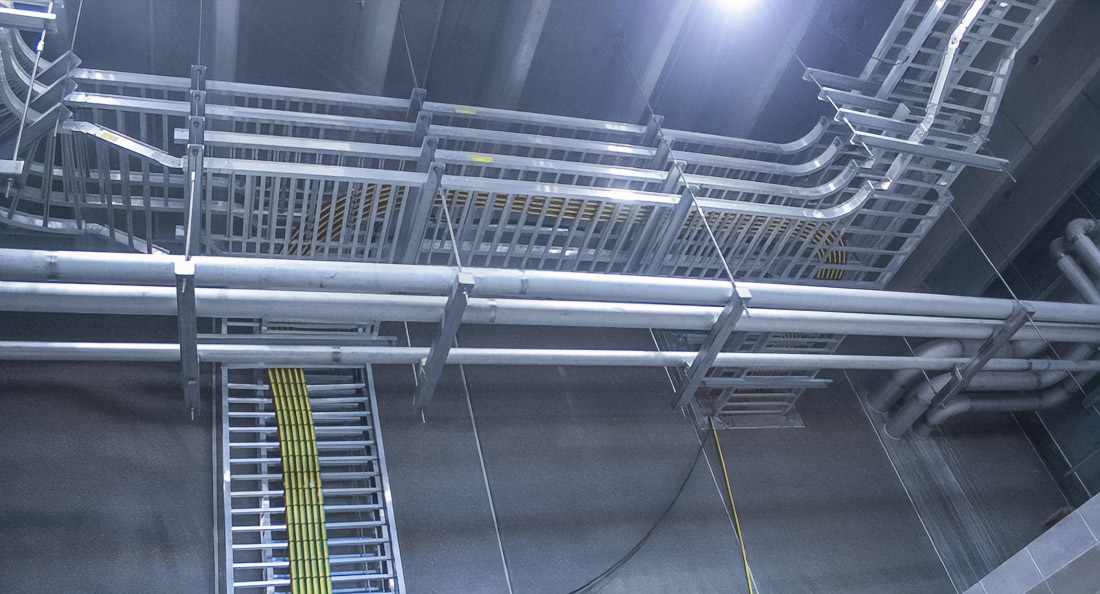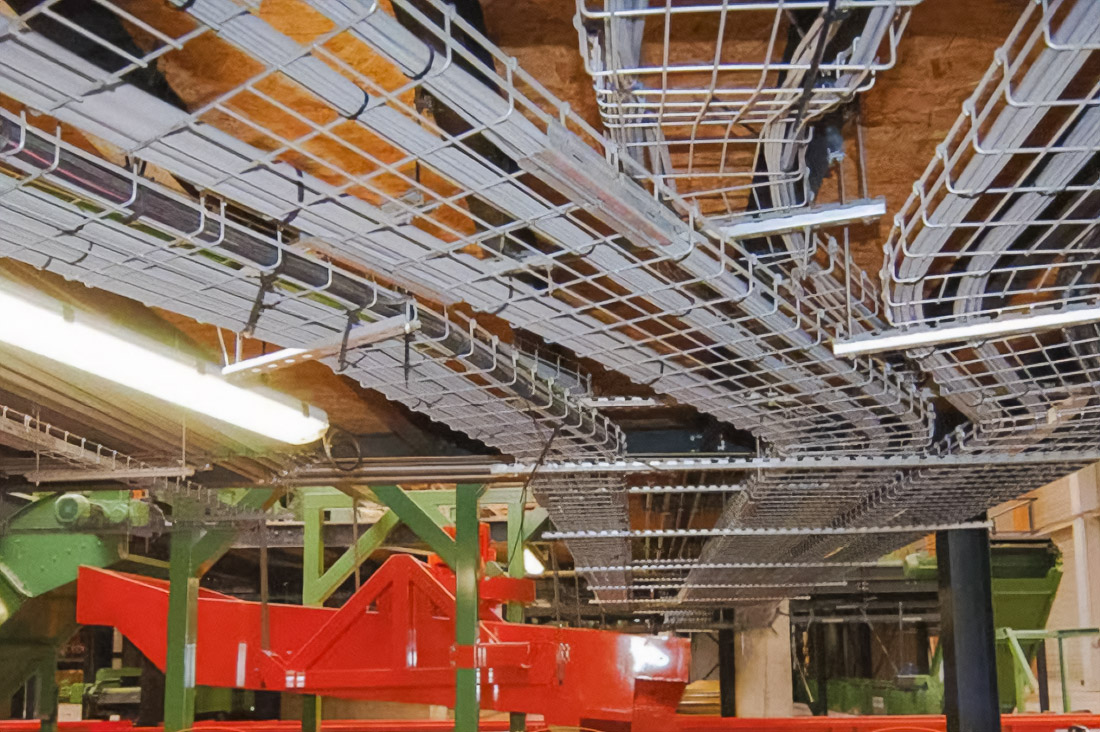Choosing Between Ladder, Mesh, and Solid Trays for Mixed-Use Projects

Choosing the right cable tray always affects not only safety, but also the durability of the entire electrical infrastructure. Each system staircase, perforated, mesh or solid has its own characteristics, and when designing, it is necessary to take into account the load capacity, ventilation, protection from external factors and ease of installation. An error in selection can lead to overheating of cables, accelerated corrosion, or increased operating costs.
Ladder Cable Trays

The ladder tray looks simple with two side profiles and ribs, but the design provides exceptional durability. Standard sections are 3 or 6 meters long, 150 to 900 mm wide, and 75-150 mm deep. The rib pitch is usually 150, 225, or 300 mm. Such a system can withstand loads of up to 200 pounds per foot, which corresponds to almost 298 kg/m. Applications heavy cables, long spans up to 6 m, industrial areas, power units, street routes. Ventilation is free, condensation does not accumulate, and access to the cables is as convenient as possible. The ladder tray is often chosen by engineers when durability and high load capacity are required.
Perforated Cable Trays

The perforated tray combines support and ventilation. Holes are provided at the bottom for moisture removal and cooling. It is suitable for power and control cables in buildings and light industry. Available in lengths of 3 m, with various flanges: from light 12-18 mm to heavy 50 mm, width up to 750 mm. The perforation reduces the weight of the structure and facilitates the installation of cables. Such systems are often installed where aesthetics are important, as well as in rooms where dust protection and moderate cooling are required. At the same time, the load is average, so it is better to use ladder solutions for heavy trails.
Mesh Cable Trays

The mesh basket is a flexible solution consisting of steel wire. Lightweight, easy to cut, installation takes a minimum of time. The spans are up to 1.2–1.5 m, the length of the sections is 3 m. The application is obvious: data centers, server, office cable networks. The system provides excellent cooling, allowing you to change the direction of the route literally on the spot. However, the load capacity is limited, and heavy cables cannot withstand such baskets. The bending radius of cables must be strictly observed: power cables are 8-12 diameters, fiber-optic cables require even more. But the flexibility and speed of installation make mesh trays indispensable in modern IT projects.
Solid Cable Trays
A tray with a solid bottom is protection. It completely covers the cables from dust, moisture and electromagnetic interference. It is used for optical fiber, telecommunication systems and in areas with high dust content. The disadvantage is obvious: there is no ventilation, which means the power cables may overheat, so de-rating is required. The standard length is 3 m, materials are galvanized steel, aluminum, stainless steel. Such systems are often chosen in hospitals, laboratories, and facilities with special requirements for cleanliness and protection.
Materials and Durability
- Hot dip galvanizing (HDG) provides a durable zinc layer and corrosion protection in industrial and outdoor environments.
- Pre-galvanizing is suitable for indoor use, it has a smooth surface and an aesthetic appearance.
- Stainless steel (SS304, SS316) is indispensable in coastal and chemically aggressive areas.
- Aluminum is lightweight, easy to install, but less durable.
- FRP (fiberglass) is completely resistant to corrosion, does not conduct current, facilitates installation and reduces the load on structures.
Installation and Accessories
Each system requires an accurate calculation. Brackets, trapezoid suspensions, and centered supports are used. Couplings and gearboxes connect the sections and maintain electrical continuity. Bends at 30°, 45° or 90°, tees and crosses allow you to form complex routes. It is important to observe the filling factor of 40-50%. Overflowing trays overheat, and cables lose their insulation and reliability. Proper grounding of the entire system is required. Flexible copper jumpers and resistance testing ensure electrical safety, while a carefully selected set of cable tray accessories simplifies installation and guarantees system integrity over time.
The temperature stability of most systems ranges from -20°C to +60°C. Ladder trays allow spans of up to 6 m, supports are installed every 3 m, mesh ones require more often 1.5 m. The cable market is growing: global volume is estimated at $4.54 billion by 2025, with almost $2.7 billion in the Middle East and Africa region. The growth is associated with the development of data centers, telecommunications and energy.
Ladder systems for heavy lines, perforated for mixed loads, mesh for flexible laying, solid for protection from dust and interference. Taking into account the standards IEC 61537, NEMA VE 1 and NEC Article 392, as well as practical recommendations on filling, bending radii and grounding, it is possible to create a cable management system that is reliable, durable and safe.

Fixie owner, dreamer, audiophile, hand letterer and fullstack designer. Performing at the junction of simplicity and elegance to develop visual solutions that inform and persuade. Concept is the foundation of everything else.